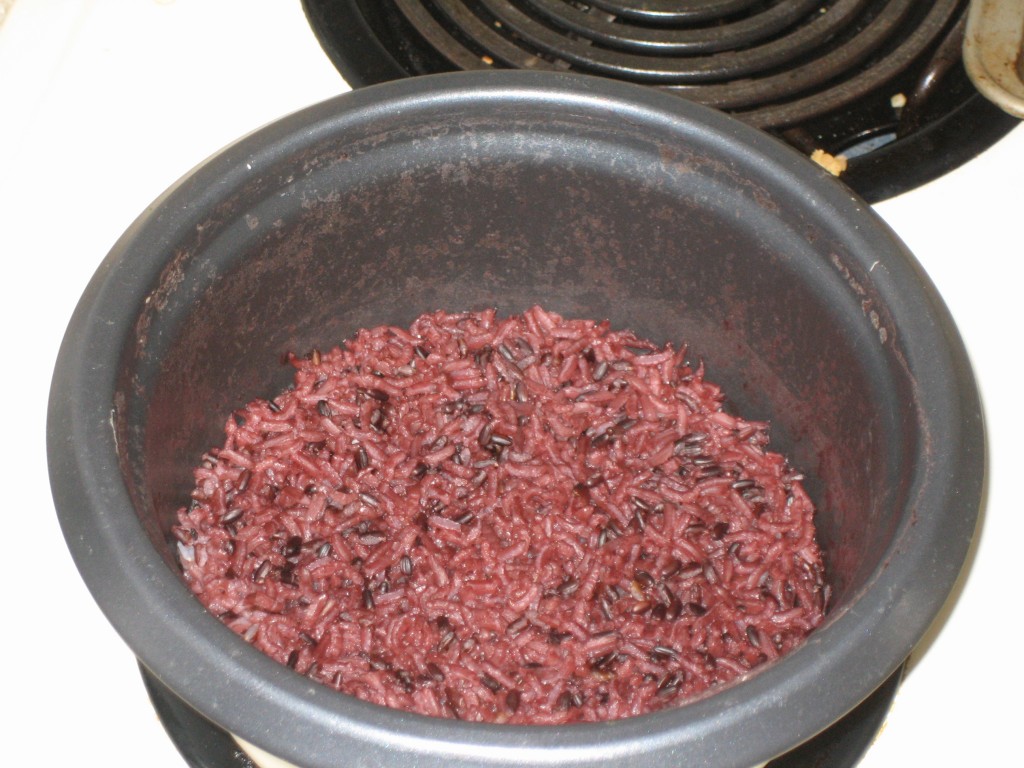I’m really at a loss here, but there’s just something way cooler about eating a purple colored plant over a more regular color. I’m not sure what it is (I’m not particularly partial to the color purple in other contexts).
Consider the case of the cauliflower. At my local grocery I can now purchase that particular vegetable in four different colors. In addition to the traditional white, there are orange cauliflowers, green cauliflowers, and purple cauliflowers. Guess which kind I get?
I’ve already shown you the range of colors carrots come in, but to me the purple ones look more exotic than white or yellow. Purple potatoes have also been touched on, but it was a while ago, so here’s the picture:
There are of course also purple corn chips and purple rice, and dozens of others I’m not thinking of tonight, but what got me thinking about this subject as a post over on the Agricultural Biodiversity Weblog that pointed to this story on a Kansas State sweet potato breeder who is trying to develop breeds of purple sweet potatoes suited to local commercial production. Now he’s got a motivation most of us don’t, K-state’s single school color is royal purple.*
But what about the rest of us without Purple Pride (assuming it’s not just me to thinks purple vegetables are fascinating)? What is the attraction of purple (and other unexpectedly colored) vegetables?
*In all fairness, he’s also motivated by the health benefits of increasing the consumption of the anthocyanins (the compounds than make most purple vegetables, and flowers, purple), and the financial benefits for local farmers if his purple sweet potatoes provide a way to differentiate their sweet potatoes from all the others on the market.
More purple plant photos:




I know about the supposed health benefits, but an ex of mine always swore that purple plants were tougher, harder to chew. I wonder. Certainly seemed to be true of the purple-podded peas were were growing and eating at the time, and purple french beans too.
Comment by Jeremy — November 30, 2009 @ 4:58 am
I hadn’t heard that before. Clearly this calls for replicated trials with different colors of carrots and cauliflower!
With corn, I’m noticed seedlings will sometimes be more purple when stressed, perhaps breeders who select for purple plants sometimes end up selecting for a constitutive stress response, which it would be easy to imagine would also involve making plants tougher. But that’s a couple of unsupported guesses piled on top of each other.
Comment by James — November 30, 2009 @ 8:09 pm